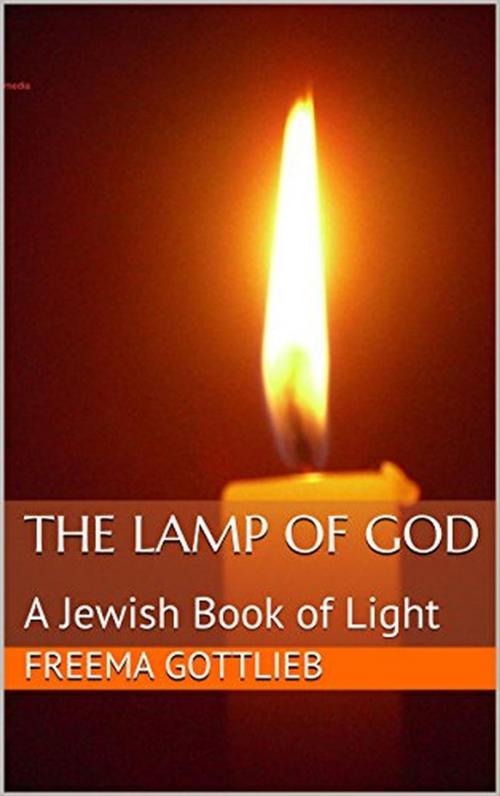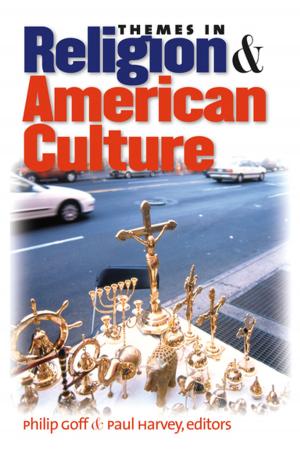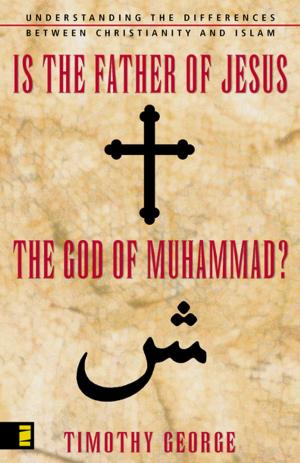The Lamp of God: a Jewish Book of Light
Nonfiction, Religion & Spirituality, Bible & Bible Studies, Old Testament, Meditations, Reference, Comparative Religion| Author: | Freema Gottlieb | ISBN: | 9781540172853 |
| Publisher: | Freema Gottlieb | Publication: | December 1, 2016 |
| Imprint: | Language: | English |
| Author: | Freema Gottlieb |
| ISBN: | 9781540172853 |
| Publisher: | Freema Gottlieb |
| Publication: | December 1, 2016 |
| Imprint: | |
| Language: | English |
**THE LAMP OF GOD **traces over 3,000 years of Jewish texts ( mined from sources that range from Psalms and the Prophets to the authors of the Talmud and the Midrash, Kabbalists, Hasidic Rabbis, and twentieth-century commentators.) for whom the light metaphor is key. The work therefore easily serves as a useful and comprehensive compendium of Jewish spiritual thought throughthe ages.But on a deeper level, it represents both a contemporary meditation on tradition and a changing ever enriching conversation with it.
Through this give and take between symbols of light and lamp, God and the soul, God and Israel, male and female something new emerges.
Focus is not so much on light in the abstract, but on “traveling light,” or the attempt to bring light down to earth and to set it within a human frame of reference. This, then, is the story, not of light but of Lamps, or varying powers of reception and response. And it is the story of the Elevation of the Feminine, for the Lamp as pure Vessel is viewed as female – Shekhinah – in kabbalistic sources. In relation to God, the whole created world, Israel, the Temple, and mankind are categorized as female, containers for His light.
The narrative is interspersed with certain dominant images of compression and explosiveness, unity and multiplicity, such as rays of light, splinters of a rock, the facets and irradiations of a jewel, the sparks and threads of a burning coal in the darkness of which all nuances of color are contained; the “Lamp of Darkness” of the Zohar; the image of the seven-branched candelabra, a Tree that serves to duplicate the kindling of the celestial lights; and the Sefirot, a kabbalistic diagram of the cosmos, seen to present one vast piping system of light, of blessing, and of life-force.
The structure of the book follows the movement of “Primordial Light” down into the depths of history by means of successive waves of containment and expulsion of essential energy. Thus, after God’s retreat within Himself (Tzimtzum), “light” is poured out through a series of emanations – the Ten Sefirot – into the colossal “Lamp” of Creation, into the Luminaries of Sun and Moon; into the Lamp-receptacles of the Temple and the People of Israel; then, after the destruction by fire of the outer wall of the Temple, the Shekhinah Light again voyages forth with Her children (the exiled Jews) into all the nations of the Diaspora. Amid the darkness of persecution and pogrom, She attempts to reverse the movement of descent and to initiate the path of return by observance of special acts (or mitzvot, such as the commandment to kindle) that turn the entire physical world into a lamp.
**THE LAMP OF GOD **traces over 3,000 years of Jewish texts ( mined from sources that range from Psalms and the Prophets to the authors of the Talmud and the Midrash, Kabbalists, Hasidic Rabbis, and twentieth-century commentators.) for whom the light metaphor is key. The work therefore easily serves as a useful and comprehensive compendium of Jewish spiritual thought throughthe ages.But on a deeper level, it represents both a contemporary meditation on tradition and a changing ever enriching conversation with it.
Through this give and take between symbols of light and lamp, God and the soul, God and Israel, male and female something new emerges.
Focus is not so much on light in the abstract, but on “traveling light,” or the attempt to bring light down to earth and to set it within a human frame of reference. This, then, is the story, not of light but of Lamps, or varying powers of reception and response. And it is the story of the Elevation of the Feminine, for the Lamp as pure Vessel is viewed as female – Shekhinah – in kabbalistic sources. In relation to God, the whole created world, Israel, the Temple, and mankind are categorized as female, containers for His light.
The narrative is interspersed with certain dominant images of compression and explosiveness, unity and multiplicity, such as rays of light, splinters of a rock, the facets and irradiations of a jewel, the sparks and threads of a burning coal in the darkness of which all nuances of color are contained; the “Lamp of Darkness” of the Zohar; the image of the seven-branched candelabra, a Tree that serves to duplicate the kindling of the celestial lights; and the Sefirot, a kabbalistic diagram of the cosmos, seen to present one vast piping system of light, of blessing, and of life-force.
The structure of the book follows the movement of “Primordial Light” down into the depths of history by means of successive waves of containment and expulsion of essential energy. Thus, after God’s retreat within Himself (Tzimtzum), “light” is poured out through a series of emanations – the Ten Sefirot – into the colossal “Lamp” of Creation, into the Luminaries of Sun and Moon; into the Lamp-receptacles of the Temple and the People of Israel; then, after the destruction by fire of the outer wall of the Temple, the Shekhinah Light again voyages forth with Her children (the exiled Jews) into all the nations of the Diaspora. Amid the darkness of persecution and pogrom, She attempts to reverse the movement of descent and to initiate the path of return by observance of special acts (or mitzvot, such as the commandment to kindle) that turn the entire physical world into a lamp.















